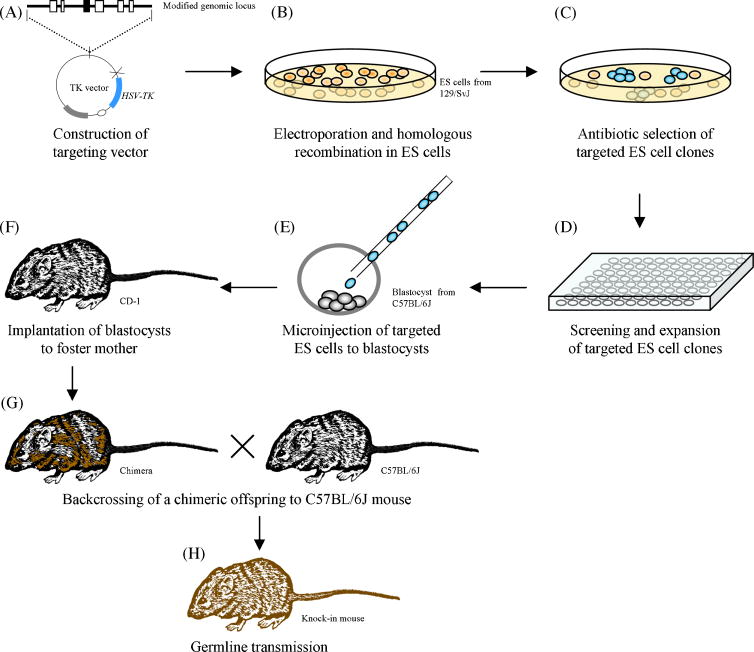Fig. 2.
Procedure of gene targeting through homologous recombination in mouse embryonic stem cells. (A) Construction of a targeting vector. The targeting vector contains the modified gene locus (filled box), and typically harbors a neo-cassette for positive selection (not shown) and the HSV-TK gene for negative selection of correctly targeted ES cells. (B) The targeting vector is linearized and introduced into ES cells (typically from 129/SvJ background) by electroporation. (C) ES cells that incorporated the targeting vector form colonies (blue) after selection with appropriate antibiotics. (D) Selected colonies are characterized by southern blotting to identify cells in which the desired gene targeting event occurred. (E) Correctly targeted ES cells are expanded and injected into C57BL/6J host embryos. (F) Blastocysts harboring a mixture of C57BL/6J embryonic cells and the targeted 129/SvJ ES cells are transferred to the oviducts of pseudo-pregnant CD-1 foster mothers. (G) Chimeric newborns are back-crossed with C57BL/6J mice. (H) Breeding of chimeric progeny carrying the targeted mutation to achieve germline transmission.

